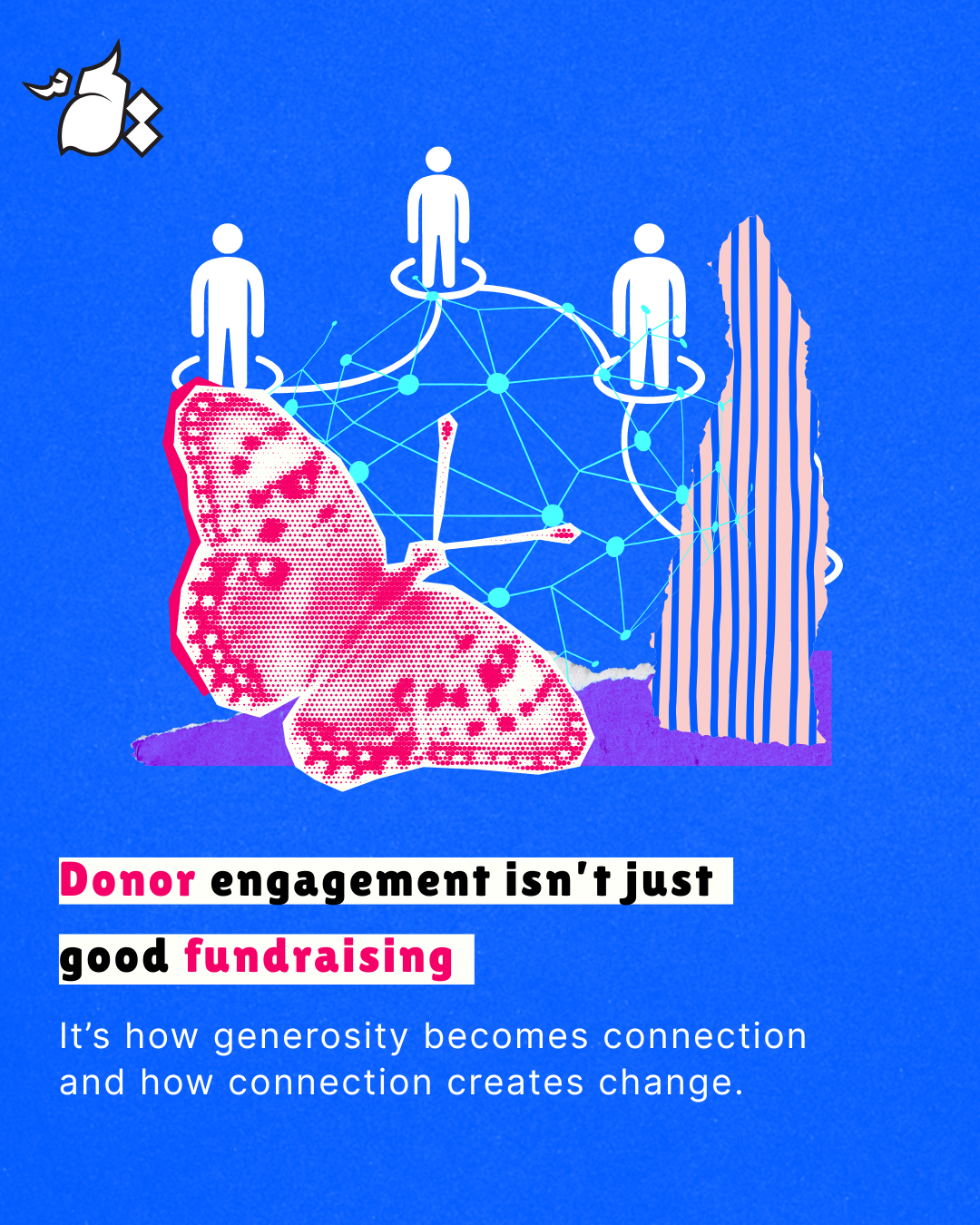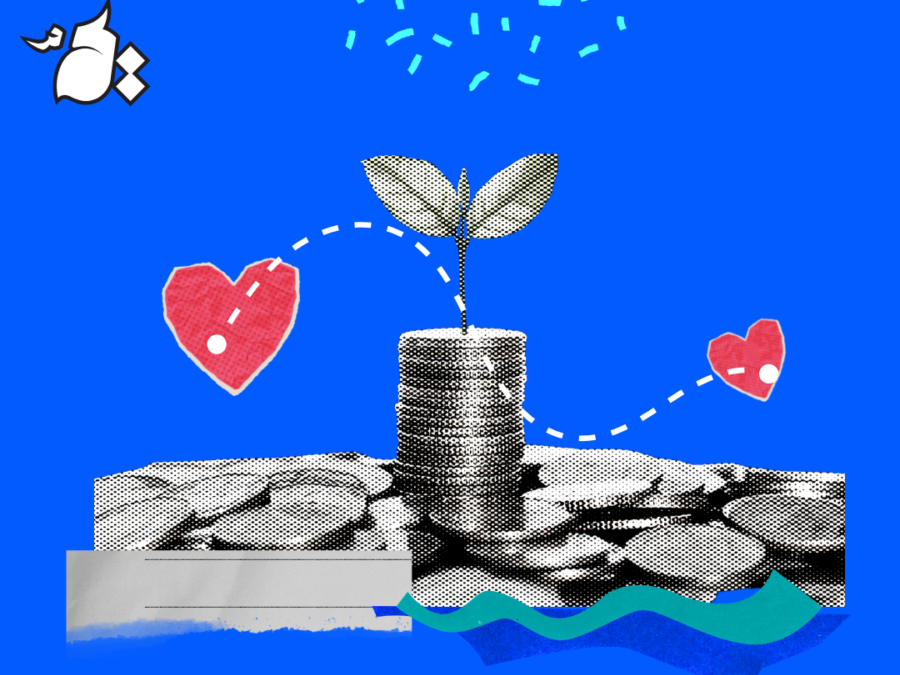Engaging your donors isn’t just good fundraising practice; it’s an opportunity to build bridges between those who care and those who carry the daily weight of the work. Nonprofits are often the connectors in this relationship, translating values into action, and creating spaces where generosity becomes impact. But we don’t just raise funds—we raise awareness, connection, and shared humanity.
One of the most powerful things a nonprofit can do is create meaningful opportunities for donors and communities to interact, ethically and intentionally. These aren’t transactional encounters. They’re invitations to witness, to listen, to learn. They allow donors to step into a story they didn’t write but care deeply about—and to do so with humility.
COVID may have pushed us apart physically, but what we’ve always needed, and perhaps now more than ever, is connection. That’s true for our communities. And it’s true for our donors.
The truth is, donors are human beings too. Many are yearning to feel grounded in something bigger than themselves. And many of them are ready to learn—not just about your programs, but about wealth disparity, cultural strength, and what resilience truly looks like. When done right, donor experiences can flip the power dynamic: communities become the teachers, and donors become the students. And that is where real transformation begins.
Let me share a story that reminded me why all of this matters so much.
The Trip That Changed Everything
In one of my projects, I was working with an organization preparing to launch a new phase of its programming. We knew it would require a significant infusion of funds, but we also knew our biggest asset wasn’t just our vision—it was the people who already believed in us.
So we started with a small prospecting exercise. We identified four individuals who had shown interest in our work—not necessarily our largest donors, but ones who were deeply aligned with our mission. We took our time. We did our research. And then we focused on building genuine relationships.
We reached out, not to ask for money, but to invite them into conversation. We shared stories from the field. We asked for advice. We invited them to small events and casual gatherings where they could connect with our team and our work on a deeper level.
Then came the big idea: a 3-day immersion trip. Thoughtfully designed, ethically structured, and deeply intentional.

This wasn’t about helicoptering in. It was about witnessing. Listening. Being present. Donors visited the communities we worked in, met youth and families, heard stories, and participated in activities that brought our mission to life. It was never performative. It was quiet, moving, and real.
By the end of the trip, something had shifted—for them and for us.
They had seen the impact. They had connected with the people. They felt part of something. And when the time came to invite them to invest in our next chapter, the support came naturally—organically.
Together, these four individuals gave over $600,000. Not through a flashy gala or a mass email. But through trust. Through care. Through connection.
And the best part? This experience didn’t just raise money. It raised commitment. It became the foundation of long-term partnerships, and it shifted how we approached fundraising as a whole.

What This Means for You
Now, you might be reading this thinking, “That’s great, but we’re a small organization. We don’t have the budget for trips or big productions.”
Let me tell you—this wasn’t about budget. It was about intention. Whether it’s a walk around the neighborhood with a donor, a carefully crafted Zoom call with community members, or an afternoon volunteering side-by-side—what matters is the quality of the experience, not the scale.
Here’s what I’ve learned:
- Start with who you know: Look at your current supporters. Who’s already leaning in? Who might want to go deeper?
- Lead with authenticity: Don’t try to impress. Invite them to witness the work. Share stories. Ask questions.
- Make it personal: Build genuine connections. Let your donors see your heart. Show them theirs reflected back.
- Honor their role: Treat them as partners, not payers. Recognize the impact they’re making—not just financially, but as part of your journey.
Put simply, Lorde’s intervention was: if we spend our energy saying “Who’s more oppressed?” we lose sight of how our struggles overlap and intersect. Instead, she called on us to stand together “in our differences”—holding space for each person’s lived reality (their “distinct sovereignty”) while also forging connection around shared values and aims. That insistence on both unity and difference is where she most directly addresses “not comparing pain” and “holding space for complexity and connection.”
Why It Matters Now
After years of disconnection, we are all craving meaning. For our donors—especially those who care deeply about justice, equity, and community—offering a pathway to experience impact is one of the most powerful invitations we can make.
When we build relationships rooted in trust, when we invite people in—not just to give but to belong—we unlock something much bigger than a donation. We build movements. We build change.
Major donor experiences can be transforming—for your organization, for your community, and for the donors themselves.
So yes, fundraising is about strategy. But it’s also about kindness. About presence. About connection.
Let’s not forget that.
Author Bio
Janine is a nonprofit leader and a certified fundraiser who enjoys helping meaningful nonprofits to grow. She builds on her wide experience to build a context-specific and adapted strategy for every organization she works with. She loves to solve puzzles, take long walks and learn new things.

